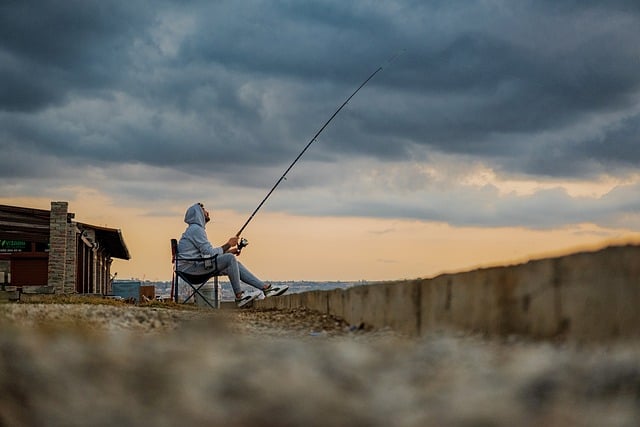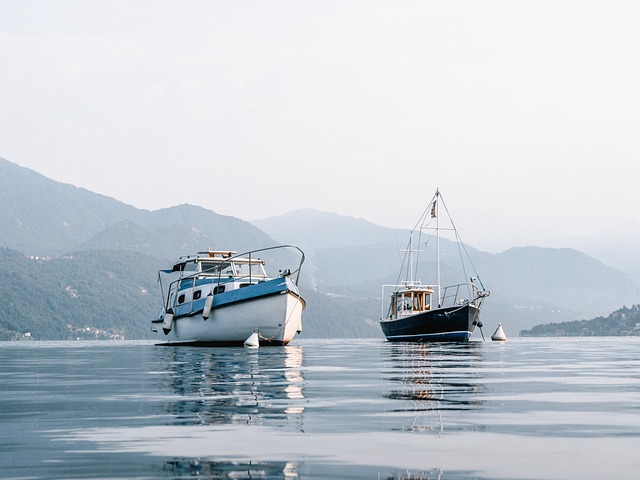Fishing kayaks demand durable, impact-resistant hulls to withstand diverse environments and potential hazards. High-density polyethylene (HDPE) and rotomolded plastic offer superior strength, resilience against impacts, scratches, and UV damage. Strategic material selection and reinforced areas prevent damage from sharp objects and collisions, while shaped contours balance stiffness for structural integrity with flexibility to absorb impact energy. Rigorous testing ensures performance and safety in various conditions. Durable shells provide enhanced security, peace of mind, and longer kayak lifespans, focusing anglers' attention on the catch rather than repairs. Top manufacturers like Ocean Kayak and Old Town Vanguard offer multi-layer materials that absorb impact energy, ensuring reliable performance on open waters. Regular cleaning, inspection, and storage in dry conditions maintain optimal shell condition.
In the world of fishing kayaks, a durable, impact-resistant shell is more than just a nice-to-have—it’s a necessity. Understanding the demands of this versatile watercraft reveals the need for robust materials and thoughtful design to withstand rough waters and challenging conditions. This article delves into the key materials, design considerations, testing methods, and real-world examples that make up a superior kayak shell, ensuring your fishing adventures are as memorable as they are safe.
Understanding the Demands of Fishing Kayaks

Fishing kayaks are designed for a unique set of challenges compared to traditional watercraft. They often navigate diverse and potentially harsh environments, from calm lakes to choppy seas. These versatile vessels demand a durable and impact-resistant shell to withstand not only the elements but also the rigors of casting lines, fighting fish, and navigating narrow spaces.
The construction of a fishing kayak’s hull plays a critical role in its overall performance and longevity. It must be built to absorb and distribute the force of impacts, preventing damage that could compromise stability and safety. A robust shell is particularly essential for kayakers who spend long hours on the water, as it ensures comfort and peace of mind during their fishing adventures.
Key Materials in Crafting Impact-Resistant Shells

When it comes to crafting durable and impact-resistant shells for fishing kayaks, certain materials stand out for their exceptional properties. High-density polyethylene (HDPE) is a popular choice due to its strength-to-weight ratio, making it ideal for kayaking applications. This material is known for its resilience against impacts, scratches, and UV damage, ensuring the kayak shell maintains its integrity over time.
Another key material is rotomolded plastic, which involves spinning molten resin into a mold to create a seamless, strong shell. Rotomolding allows for complex designs and ensures excellent impact resistance, making it a preferred choice for high-performance fishing kayaks. These materials contribute to the overall durability and safety of the vessel, providing kayakers with peace of mind during their adventures on the water.
Design Considerations for Durability

When designing a durable and impact-resistant shell for a fishing kayak, several key considerations come into play. The first is material selection; choosing robust composites or high-density plastics that can withstand the rigors of both marine environments and accidental impacts. Reinforced areas, such as the hull’s edges and corners, are especially critical to prevent damage from sharp objects or collisions with rocks or other obstacles.
Additionally, the shape and contouring of the shell should be engineered for both strength and flexibility. A well-designed kayak should have a balanced blend of stiffness to maintain structural integrity and give to absorb impact energy, preventing cracks or breaks. This balance is particularly important in areas like the hull’s bottom, where force transfer during paddling and potential strikes from underwater hazards can be significant.
Testing Methods for Impact Resistance

In the development of a durable, impact-resistant shell for fishing kayaks, rigorous testing methods are paramount to ensure performance and safety in various conditions. These tests often involve subjecting the kayak’s hull to high-speed impacts with solid objects or other vessels, mimicking real-world scenarios where accidents can occur. One common technique is the drop test, where a standardized weight is dropped from a specific height onto the kayak’s surface, measuring the resulting damage and deformity.
Another crucial method is the impact resilience test, which measures how well the shell absorbs and disperses energy during a collision. This involves using specialized equipment to simulate high-speed impacts, observing factors like crack formation, material failure, and the overall structural integrity of the kayak’s hull. Additionally, water absorption tests assess the shell’s resistance to punctures and leaks, vital for maintaining buoyancy during fishing excursions.
Benefits of a Durable Shell for Fishing Adventures

A durable, impact-resistant shell is an invaluable asset for any fishing kayak enthusiast. The benefits are manifold; it provides a sense of security and peace of mind, especially when navigating rough waters or encountering unexpected obstacles. This robust outer layer shields the kayak from sharp objects, extreme weather conditions, and accidental collisions, ensuring its structural integrity remains intact.
By investing in a high-quality, durable shell, fishing kayakers can extend the lifespan of their craft, maintain optimal performance, and enjoy more reliable and comfortable excursions. The impact resistance reduces the risk of costly repairs or replacements, making it a practical choice for enthusiasts who frequently embark on adventurous trips. This feature also contributes to enhanced overall enjoyment, allowing anglers to focus on the thrill of the catch rather than worrying about potential damage.
Common Challenges and Their Solutions

In the realm of outdoor adventures, especially in demanding activities like fishing kayaks, durability and impact resistance are paramount. Common challenges faced by kayakers include withstand tough water conditions, sharp objects, and accidental collisions, all of which can damage a conventional kayak shell. One solution lies in advanced manufacturing techniques that incorporate robust materials such as high-density polyethylen (HDPE). HDPE is known for its exceptional strength-to-weight ratio and resistance to impacts, making it ideal for rugged outdoor use.
Furthermore, innovative designs featuring reinforced joints and seamless construction mitigate weaknesses often found in traditional shells. These solutions not only enhance the kayak’s longevity but also ensure a safer experience. By addressing these challenges head-on, modern fishing kayaks are better equipped to handle diverse environments, from choppy waters to sharp underwater obstacles, providing kayakers with added peace of mind during their adventures.
Choosing the Right Kayak Shell for Your Needs

When choosing a kayak shell, especially for fishing kayak enthusiasts, understanding your specific needs is paramount. Different materials and designs cater to various water conditions and activities. For instance, a more durable, rigid shell is ideal for rough seas or aggressive angling, while a lighter, flexible design offers enhanced maneuverability in calm waters.
Fishing kayakers should consider factors like impact resistance, as accidental collisions with rocks or other obstacles can be common. A robust, impact-resistant shell can protect you and your gear, ensuring a safer and more enjoyable experience on the water. Additionally, features like integrated storage compartments and ergonomic design play a significant role in comfort and practicality during extended fishing trips.
Maintenance Tips to Prolong Lifespan

To ensure your fishing kayak’s durable, impact-resistant shell remains in top condition, regular maintenance is key. Start by cleaning your kayak after each use with fresh water and a mild detergent. Avoid using harsh chemicals or abrasive materials that could damage the shell. Remove all accessories and equipment to prevent build-up and corrosion.
Next, inspect your kayak for any signs of wear, cracks, or damage. Address these issues promptly using recommended repair kits. Ensure proper drainage after cleaning by wiping down the exterior and checking for water traps inside the hull. Store your kayak in a dry, sheltered area when not in use to prevent mold, mildew, and rust from forming.
Real-World Examples: Top Performing Kayak Shells

In the realm of outdoor adventures, the fishing kayak has emerged as a versatile and robust vessel, demanding a durable shell that can withstand the rigors of open water. Several manufacturers have risen to this challenge, developing kayaking shells that are not only impact-resistant but also reliable in various aquatic conditions. Real-world examples like the Ocean Kayak Triplet and the Old Town Vanguard are renowned for their superior construction. These kayaks feature multi-layer materials, including rotomolded plastic and fiberglass composites, which contribute to exceptional strength and flexibility. This blend of materials allows these shells to absorb and distribute impact energy, preventing damage even when navigating choppy waters or encountering unexpected obstacles.
Furthermore, the design aspects of these top-performing kayak shells are worth noting. Streamlined shapes and hydrodynamic profiles minimize drag, enhancing speed and maneuverability. Additionally, reinforced edges and reinforced seats ensure longevity, even in frequent use. These features make them a preferred choice for fishing enthusiasts who demand both performance and reliability during their excursions on the water.
